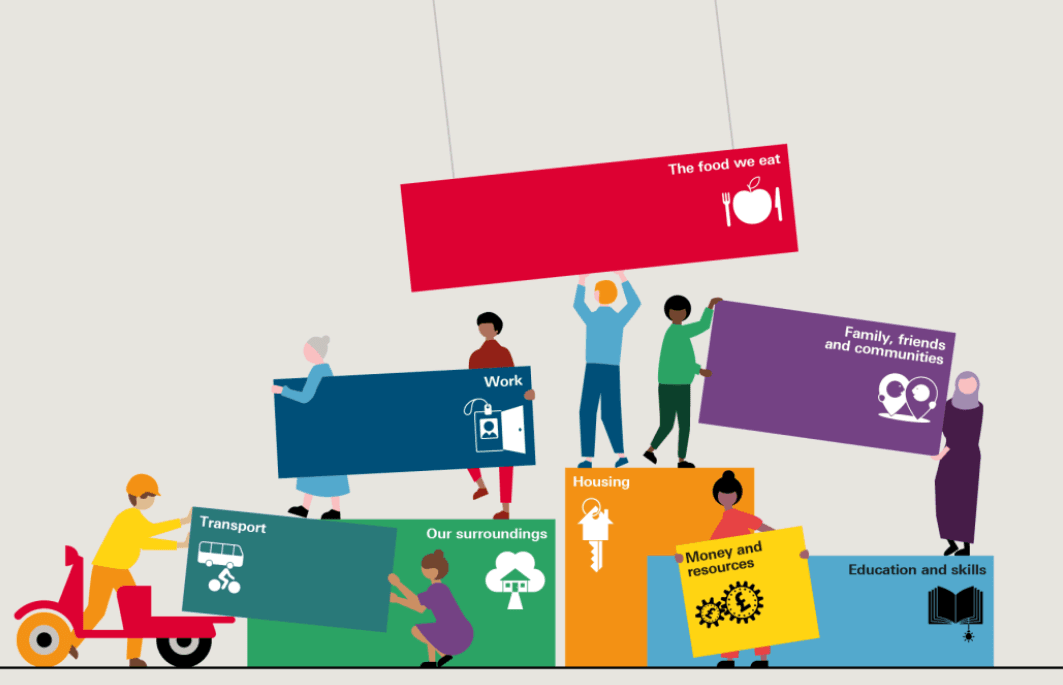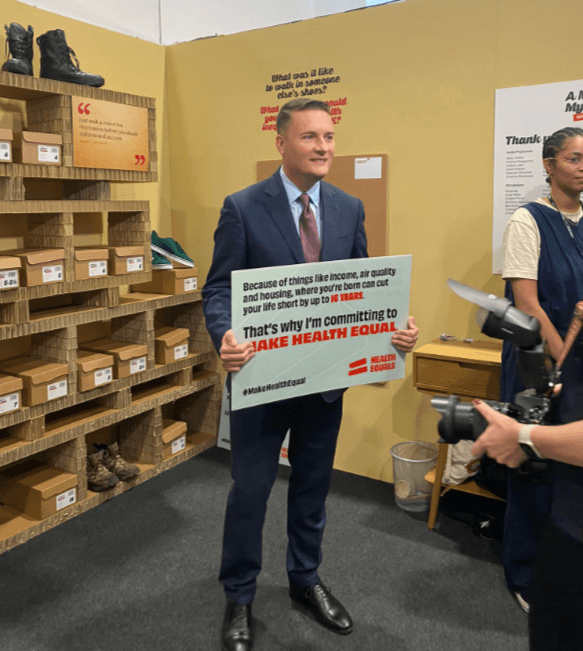FrameWorks UK has been working with the Health Foundation to tell a new story about health.
A story which increases understanding of the wider factors that shape our health and builds support for the policies needed to reduce health inequalities and improve lives.

Why we needed a new story
Almost every aspect of our lives, from our jobs to our homes, our access to education and public transport, to whether we experience poverty or discrimination, impacts our health and ultimately, how long we will live. But in the public and political debate about how to improve health in the UK, these wider factors are often left out or misunderstood.
We carried out research to understand how people think about health – and to find which framing strategies could build understanding and support for changes which will improve everyone’s health.
Image: Ryan Lau, from Unsplash.
What we found
Our research found that the way people think about health is highly individualistic.
We think we’re healthy, or not, because of the food we eat, whether we go to the gym, whether we drink or smoke.
Health is also about medicine, doctors and nurses. It’s about the NHS that patches you up when you’re sick.
The broader factors that shape our health – from whether we have a warm home to a job that pays enough to cover the bills – are almost entirely missing from view.
But a different story can shift people's thinking.
When we focused on why this issue matters – that right now, too many people are dying earlier than they should – when we explained how the places we live, work and play shape our health, we built demand for change.
What we did
We took the findings of the research and developed them into an easy-to-use toolkit, and a suite of resources to help people change the conversation in practice.
We also worked with public health teams in England, Scotland and Wales to support them to put the findings in to practice in their own locations and contexts.
And we supported the creation and launch of Health Equals – an umbrella membership organisation campaigning to reverse health inequalities and improve life expectancy. Our framing recommendations were built into the brand and identity of the organisation, and used to develop their campaigns including Lives Cut Short and the Youngest Protest.
See the framing recommendations come alive in this video from campaign group Health Equals.
When I use the framing toolkit, I tend to see people more actively drawn into the conversation, almost a bit of a "lightbulb" moment as people change from an internal thought of "what's this got to do with me?" to "we need to do something about this".
The impact
1. Energising a sector
Excitement about using this approach has been palpable from public health professionals. Following the pandemic, which was a difficult time for many of us, many public health professionals experienced stress, burn out and low morale.
Since learning about, and using, this approach to the building blocks of health, we have seen public health teams re-energised, able to see how the vital work they are doing adds up to a bigger picture of change to improve health.
It exceeded my expectations; I found it very practical and empowering. I could use the learning straight away.

2. Changing a story
There has been wide uptake of our recommendations which is starting to shift the story in the way the wider determinants of health are talked about in public and political debate, including:
- The building blocks of health metaphor being used by over 70 local authorities, NHS trusts and other public bodies to explain how our homes, jobs, and environment shape our health.
- Labour’s Health Mission used the ‘building blocks of health’ metaphor in their election materials.
- The framing used in the media including Dr Xand Van Tulleken using the framing recommendations to talk about stress on BBC breakfast television.
Image: The Health Foundation

3. Influencing decision-makers
Those who have started using our new story have described being able to cut through with elected officials who have never previously engaged in work on the building blocks of health.
One public health consultant described how, despite having worked on and talked about the wider determinants of health with her council leaders for years, when she used this new story one of the Councillors suddenly exclaimed: “Why haven’t I heard about this before?!”
Health Equals campaigns have successfully engaged the public and politicians alike with their message of how health inequalities are cutting lives short, including sharing this vital story with Health Secretary, Wes Streeting, and taking their petition all the way to number 10.
Image: Health Equals / PA Media by David Parry Media Assignments

4. Shaping policy and practice
And we are already seeing our new story shape how policy and public health practice is developed.
For example, partners have used this approach to engage and influence Scottish Government on its new population health framework.
Partners have also described how NHS colleagues are understanding and engaging with key issues like housing and transport for the first time. This increased understanding from key audiences has led to new practice and is shaping how key policy is developed.
Having a shared language has also enabled different parts of the system to collaborate more effectively together, opening new opportunities, relationships and ways of working.
Image: Health Equals



